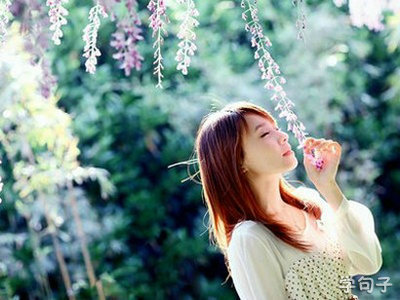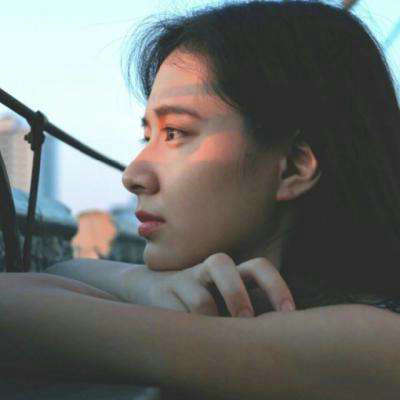
对北京介绍的一篇导游词。
英文200词
Beijing is the birthplace of Chinese Civilization and one of the six ancient capital cities in China.During the last 3000 years it served as a capital for several dynasties.It is the second largest city in China with a population of more than 11 million.Beijing is neither cold in winter nor very hot in summer.The best seasons in Beijing are Spring and Autumn.Beijing is indeed an ideal place to visit all round the year.Temple of Heaven in the southern part of Beijing is China`s largest existing complex of ancient sacrificial buildings.Occupying an area of 273 hectares,it is three times the area of the Forbidden City.It was built in 1420 for emperors to worship Heaven.The principle buildings include the Altar of Prayer for Good Harvests,Imperial Vault of Heaven and Circular Mound Altar.Forbidden City,so called because it was off limits to commoners for 500 years,is the largest and best-preserved cluster of ancient buildings in China.It was home to two dynasties of emperors -the Ming and the Qing - who didnt stray from this pleasure dome unless they absolutely had to.Great Wall of China,Also know n to the Chinese as the 10,000 Li Wall,the Great Wall of China stretches from Shanhaiguan Pass on the east coast to Jiayuguan Pass in the Gobi Desert.Standard histories emphasize the unity of the wall.
高中英文导游词作文一百词左右
Ladies and Gentlemen: I am pleased to serve as your guide today. This is the palace museum; also know as the Purple Forbidden City. It is the largest and most well reserved imperial residence in China today. Under Ming Emperor Yongle, construction began in 1406. It took 14years to build the Forbidden City. The first ruler who actually lived here was Ming Emperor Zhudi. For five centuries thereafter, it continued to be the residence of23 successive emperors until 1911 when Qing Emperor Puyi was forced to abdicate the throne. In 1987, the United Nations Educational, Scientific and Cultural Organization recognized the Forbidden City was a world cultural legacy.
关于北京故宫的导游词(100字左右)
北京位于华北平原北部,背靠燕山,毗邻天津市和河北省。
北京的气候为典型的北温带半湿润大陆性季风气候。
北京是首批国家历史文化名城和世界上拥有世界文化遗产数最多的城市,三千多年的历史孕育了故宫、天坛、八达岭长城、颐和园等众多名胜古迹。
早在七十万年前,北京周口店地区就出现了原始人群部落“北京人”。
公元前1045年,北京成为蓟、燕等诸侯国的都城。
公元938年以来,北京先后成为辽陪都、金中都、元大都、明清国都。
1949年10月1日成为中华人民共和国首都。
2015年末,北京全市常住人口2170.5万人,比2014年末增加18.9万人。
其中,常住外来人口822.6万人,占常住人口的比重为37.9%。
2015年北京市实现地区生产总值22968.6亿元,比2014年增长6.9%。
2015年7月31日,国际奥委会主席巴赫宣布北京携手张家口获得2022年冬季奥林匹克运动会的举办权。
北京由此成为全球首个既举办过夏季奥运会又即将举办冬季奥运会的城市。
假如你当导游,并迎接一个来北京游览的旅游团的英语作文(100词)
Beijing, the capital of People's Republic of China, the central municipality, National Center City China, Chinese politics, culture, education and international exchange center, while the decision-making centers and management centers in China's economy and finance. Beijing is located in the northern end of the North China Plain, southeast connected with Tianjin, the rest is surrounded by Hebei Province. Beijing has built more than 3000 years of history of the capital city and the history of 850 years, is one of China's four ancient capitals, with some international influence, which first appeared in the literature of the name thistle. Beijing since the Yuan, Ming blend of Chinese culture, has many historical sites and cultural landscapes, is the world's largest city has the world's cultural heritage. Beijing is also one of the most rainfall in North China region. The historic International Higher university, Peking University, Tsinghua University, also located in Beijing. famous tourist sitesBeijing is the world's the world's heritage (6) most of the city, is the world's first geological park has the world's capital cities. Beijing is rich in tourism resources, opening up more than 200 tourist attractions, the world's largest palace of the Forbidden City, Temple of Heaven Temple of Heaven, Beihai Royal Garden, the Royal Palace and the Old Summer Palace gardens, as well as the Badaling Great Wall, Mutianyu Great Wall and the World largest courtyard Prince Gong's Mansion and other attractions. The city's total cultural relics 7309, 99 national key cultural relics protection units (including the Great Wall and the Grand Canal in Beijing), the 326 municipal units, five national geological parks, 15 national forest parks. World Heritage: the Forbidden City, the Great Wall, Zhoukoudian, the Temple of Heaven, the Summer Palace, Ming Tombs. Geoparks: Beijing Fangshan World Geological Park. National Scenic Area: Badaling - Ming Tombs, Shihuadong. Chinese historical and cultural street: Imperial College Street, pipe Byway. Historical and cultural towns in China: Miyun County Gubeikou town. Chinese historical and cultural village. Mentougou: dining hall town Chuandixia, Ling monastery town water village, Longquan Town Qucun glass. history and cultureZhou became the capital of the State of Yan, one of Zhou vassal state when. Since Jin from becoming the capital of ancient China are. Since the Yuan Dynasty, became the capital of the whole of China. Since the beginning of the Ming emperor massive expansion of Beijing, the Ming Dynasty Beijing became the capital of a Han dynasty. Qing Dynasty in Beijing on the basis of the continuation of the Ming and carried out some renovation and expansion. To the Qing Dynasty Beijing became the world's largest city. Beijing has built more than 3000 years history of the city the capital of history and 859 years. Since the Qin and Han Dynasties in Beijing it has been a military and commercial center in northern China. 1860, British and French troops into Beijing; in 1900, Boxer Rebellion into Beijing again, the beautiful city of Beijing has been very severely damaged and looted, a large number of cultural relics were looted military aggression and bad people. After the Revolution in 1911, the first year Jan. 1, the ROC capital in Nanjing, capital Beijing in March the same year, seventeen years until the Chinese Nationalist Crusade captured Beijing, Chang Tso-lin defeated back to the northeast, the Northern government to step down. Republic of China at the beginning of Beijing's local institutional Rengyi clear system, called Shuntian. In three years until, changed Shuntian Jingzhao place directly under the Central Government of the Northern Government. During this period, Beijing built a tram system, and a number of modern cultural and educational institutions, such as Qinghua University, Beijing University, Beijing University, Fu Jen Catholic University, Peking Union Medical College. • 1937 after seven seven incident, Peking was occupied by Japan. Pseudo interim government in the establishment of the Republic of China, and the Peking renamed Beijing. August 21, 1945, the Japanese army invaded Beijing surrendered, renamed as Peking. January 31, 1949, People's Liberation Army entered Beiping, to achieve the liberation of Beijing. September 27 the same year, Chinese People's first plenary session of the People's Republic of China on the Capital, Calendar, National Anthem, Flag of resolution, Peking renamed Beijing. October 1, 1949, the Central People's Government of People's Republic of China was proclaimed in Beijing. religious cultureBeijing not only brings together the famous five main religions (Taoism, Buddhism, Islam, Christianity, Catholicism) in the world, and these five religious architecture and culture has its own characteristics. For example, we are now traveling towards the mound on the road, just a few kilometers, it is inhabited by four religious (ChaoYangMenWai of dongyuemiao, Dongsi Mosque, Fusi, Guangji, White Pagoda Temple) in building, while in southern Beijing Declaration, to Beijing to commemorate the founding of the city as the center pillar of the surrounding area, it can be said to gather many famous places of the five major religions. These options are available: Buddhist temple, Fayuan, Changchun Temple; Baiyun Taoist; Christian church Zhushikou; Xuanwumen Catholic Church (South Church); Islam Niujie Mosque; this religious culture zone in the world big cities are rare, reflecting the Orient and culture, reflecting the unique charm of Beijing urban culture, it embodies the great cohesion of the Chinese nation. Customs and taboosBeijing is the seat of the ancient capital, historically, due to a long period of the Central Plains and Northern ethnic interchange, and therefore has a blend of cultures, customs and languages of many peoples. Over time, it produces a rich local characteristics of Beijing customs. For example, set drink in one of Beijing temple fairs and the like. festivalBeijing's traditional festivals in various forms, rich in content, is an integral part of Chinese history culture. Far from these popular holiday custom, we can clearly see the wonderful pictures of ancient people's social life. Features festivals such as Longqingxia Ice Festival, Fragrant leaves festival, Baiyun Temple, Dongyue temple and so on.
北京长城导游词100字
长城东西南北交错,绵延起伏于我们伟大辽阔的土地上。
它好像一条巨龙,翻越巍巍群山,穿过茫茫草原,跨过浩瀚的沙漠,奔向苍茫的大海。
根据历史文献记载,有20多个诸侯国家和封建王朝修筑过长城,若把各个时代修筑的长城加起来,大约有10万里以上。
其中秦、汉、明3个朝代所修长城的长度都超过了1万里。
现在我国新疆、甘肃、宁夏、陕西、内蒙古、山西、河北、北京、天津、辽宁、吉林、黑龙江、河南、山东、湖北、湖南等省、市、自治区都有古长城、烽火台的遗迹。
其中仅内蒙古自治区的长城就达3万多里。
长城位于我国的北部,它东起河北省渤海湾的山海关,西至内陆地区甘肃省的嘉峪关。
横贯河北、北京、内蒙古、山西、陕西、宁夏、甘肃等七个省、市、自治区,全长约6700公里,约13300里,在世上有“万里长城”之誉
求成都著名景点导游词英语,100词以内,带中文
【第1篇】亲爱的游客们:今天由我来当大家的导游,我感到非常荣幸。
我希望在这美好的一天里给大家带来快乐。
游客们,现在我们来到的是长廊,你看它多美啊
红漆的栏杆,绿漆的柱子一眼望不到头,这条长廊有七百多米长,分成273间。
每一间横槛上都有五彩的画,画着人物、花草、风景,几千幅没有哪两幅是相同的。
说到这儿,你有点不信了吧,但是这的确是真的,这得靠多少劳动人民的智慧才能修建成这美丽的长廊啊
走完长廊,如果大家想到昆明湖中心的小岛上玩,就必须通过一座石桥。
这座石桥有十七个桥洞,叫十七孔桥;桥栏杆上有上百根石柱,柱子上都雕刻着小狮子,姿态不一,没有哪两只是相同的。
颐和园的旅程就到这里了,亲爱的游客们,再见。
【第2篇】大家好,我是你们的导游——xx,今天就由我来给大家讲解颐和园的风景名胜。
请大家随着我走。
这个就是著名的长廊,这个长廊可不一般。
它全长700多米,分成273间,每间的横槛上都有许多五彩的图画,画得各式各样,有人物、花草、风景,几千幅画没有哪两幅是相同的。
被称为“世界第一廊”。
走完长廊,就来到闻名遐迩的万寿山脚下。
大家请抬头看,一座八角宝塔形的三层建筑耸立在半山腰上,黄色的琉璃瓦闪闪发光,这就是古香古色的佛香阁。
登上万寿山,我们可以看到颐和园的全部风景。
大家往前看,这就是碧波荡漾的昆明湖。
大家快随我看看这美丽的石桥吧
这座石桥有17个桥洞,叫十七孔桥。
桥栏杆上有上百根石柱,柱子上都雕刻着姿态不一的活灵活现的小狮子。
这在历史上为帝王建造的古典园林,现已成为中国最著名的旅游参观热点之一,每年接待游客数百万人。
1986年,颐和园被联合国教科文组织列为世界文化遗产。
今天的观光游览就要结束了,在颐和园的这段时光希望能成为您北京之游中的永恒记忆。
【第3篇】大家好,欢迎各位来到北京的颐和园。
我姓苏,大家可以叫我苏导。
请大家跟着我一起进入颐和园内参观。
在游览的过程中,请大家要注意安全,不要随地扔垃圾。
颐和园是清代皇家园林和行宫,是我国重点保护单位,已经列入《世界遗产名录》。
一进门,在绕过大殿,就来到有名的长廊,这条长廊共有七百多米长,分成273间,每一间的横槛上都有五彩缤纷的画,有人物、花草、风景等。
你知道吗
在这几百幅画里,竟没有哪两幅是相同的,这是多么令人惊奇啊
我们现在来到了万寿山脚下,仰望山上,那座金光闪闪的八角宝塔就是佛香阁,下面的一排排宫殿,就是排云殿。
上了山就到了万寿山山顶,这里是欣赏颐和园的最佳位置。
正前方就是昆明湖,大家看,它是不是静得像一面镜子,绿得像一块碧玉
昆明湖真大啊!看到湖中心的那个小岛了吗?大家走过长长的石桥,就可以去小岛上玩。
这座石桥一共有十七个桥洞,它们由小变大再由大变小,这就是十七孔桥。
在桥旁边的柱子上,都雕刻着小狮子,这些小狮子都姿态不一,没有哪两只是相同的。
颐和园到处有美丽的景色,我说也说不尽,请你们慢慢欣赏吧!【第4篇】各位朋友:大家好
我是颐和园的导游-----xx。
欢迎您们大家来颐和园游玩
在游玩中请大家注意安全,带好自己的宝宝,请不要乱摸乱画乱扔拉圾惹来不必要的麻烦——好
跟好队一起观赏美景吧
各位朋友现在我们已经来到了古今文明的长廊,瞧
那油油的柱子,红彤彤的栏杆是那么的漂亮
各位朋友您们看上面那画,这些画有上千幅画 。
这长廊有两百多间呢
每一间都绘画有不同的画,仔细看画不仅逼真而且还体现了画工的细心和艰辛。
话不多说我们还是去万寿 山看看吧
现在我们已经到了万寿山脚下,看
山上那个金碧辉煌佛香阁,我们站在山上可以看昆明湖它碧绿如镜仿佛把我们引入了仙境,微风吹着挥身轻飘飘的。
看呢
佛香阁下面那一排排的宫殿多么像一幅美丽的图画呀
来吧
我们一起下去看看吧
看
那桥上那那些格了吗
它有十七个洞所以称十七孔桥,上面石雕的小狮子可爱极了。
好
现在大家可以在此休息一会,待会我们去下一站。
【第5篇】亲爱的游客:欢迎来到“走遍世界”号旅游团,我是导游悦悦,你们等到我们旅游团,真是幸运者啊
因为我们今天安排游玩的地方是中外闻名的颐和园。
好
现在我们已经进了颐和园的大门了,大家看
那就是长廊
据说呀
以前,慈禧觉得在宫里闷得慌,决定到颐和园去走走,但是她觉得整天都来这里玩,除了看山,就是看水,时间长了就没意思了。
于是,她起了一个想法:如果有什么建筑能让我一步一个景就好了。
就召见了工匠,修建了这条长廊。
整个长廊分成了173间,画共一万四千余幅,上面大概画着岳母刺字、西游记、武松打虎等古代故事。
好了,我们再看长廊的两侧,这些树都已有一百多年的历史了。
现在我给大家10分钟的时间拍照,10分钟后集合。
好了
我们已经走完了长廊,大家说长廊长不长
什么
不长
我建议你还是去买副眼镜再回答我的问题吧
行了,转入正题,我们现在已经到了万寿山脚下。
大家网上看,那座像微型宫殿一样的三层建筑就是佛香阁。
走,我们上山去
看
我们已经到佛香阁前了。
大家看那,那就是昆明湖,我们一会将要去那里游玩。
现在我们要到佛香阁里面游玩,这座威严而慈祥的观世音菩萨外面是渡着金的。
所以很珍贵,大家可千万不要损坏它呀
否则被罚了款,可别怪我没告诉你呀
现在我们到了刚才讲的昆明湖了,湖上那座有十七个孔的桥,就是十七孔桥,大家仔细看,就能发现桥上的百十根石柱上的小石狮子是不相同的,有趣儿吧
大家可以在这里拍照留念,五分钟后集合
好了,我们颐和园的参观已经结束了,祝愿您回家的路上一路平安



